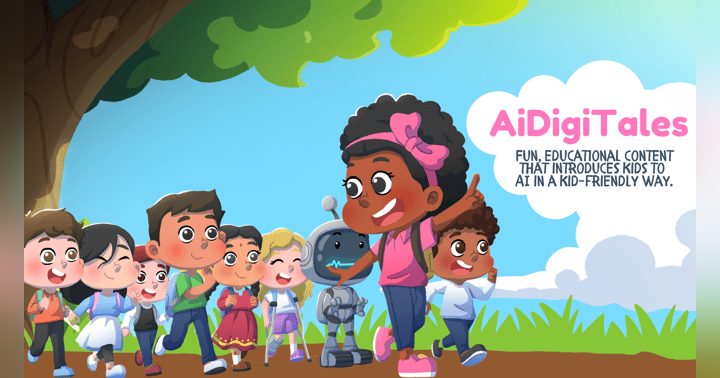Embracing AI: A Teachable Moment for Educators and Students

Blog based on Episode 172 with Special Guest Leena Marie Saleh
Artificial Intelligence (AI) has been a hot topic in the world of education in recent years. While some are excited about the potential benefits it could bring, others are fearful of the unknown and worry about the possible risks. However, it is crucial for educators to recognize that AI is not a replacement for teachers, but a tool that can make our lives easier. In this blog post, we’ll explore how educators can embrace technology and use AI as a teachable moment to help students learn how to use it properly and responsibly, and highlight the importance of collaboration and networking as we navigate the modern education landscape.
Why AI Is a Tool, Not a Replacement For Teachers
As educators, we must understand that AI and other technological advancements in education are tools designed to make our lives easier. They are not meant to replace teachers. We must embrace these tools while also ensuring they are appropriately used in the classroom. Fear is often the first response when we encounter something unfamiliar or new. However, we must move beyond this fear and focus on how to use these tools effectively in education.
Teaching students to think critically about the use of AI and other technology is essential. We must teach them how to use it properly and how to distinguish accurate information from misinformation. The use of AI can be a teachable moment for our students to develop their critical thinking skills. We can also use AI to help students with tasks that may be tedious or time-consuming, such as generating topic ideas or research. However, when it comes to tasks that require creativity and emotion, like writing a poem or essay, we must remind our students that technology cannot replicate the deep connection and nuances that come with human expression.
Navigating the use of AI in education can be challenging, but it is not insurmountable. As educators, we must work together to develop guidelines and best practices for the use of AI in the classroom. It is essential to have conversations among staff, administrators, and IT professionals about how to implement these tools to benefit students and teachers. Ultimately, we must recognize that AI is not a replacement for teachers, but a tool that can help us become better educators., Adapting to AI in Education: Embracing Teachable Moments
One of the biggest challenges with integrating AI into education is the fear of the unknown and the potential risks that come with it. Some districts even resort to shutting down access to AI tools altogether, which can hinder teachers from using them to improve their instruction. However, it is important to recognize that AI is already a part of our daily lives and will continue to play a significant role in the future. As such, educators must embrace teachable moments and teach students how to use these tools properly and responsibly.
Teachable moments can arise in different situations, such as when students attempt to use AI to complete assignments or when teachers share resources that involve AI. In higher education, professors already acknowledge the existence of such tools and encourage responsible use by setting clear parameters and expectations for their use in class. At the K-12 level, leaving access to AI tools open for teachers can empower them to teach their students how to use them properly and integrate them more effectively into their lessons. However, we must also recognize that AI is not a perfect tool and has its limitations. For instance, while AI can produce concise and efficient writing, it may lack the emotional impact that comes with human creation. We need to continue using AI to support and enhance our creativity rather than relying on it entirely.
Collaboration and networking should also be prioritized in preparing for the era of modern ed tech and modern education. By breaking down silos, educators can learn from each other’s experiences and adapt to the ever-changing education landscape. Administrators and thought leaders should facilitate these conversations and provide opportunities for educators to experiment with AI tools and share their successes and challenges. Ultimately, by embracing AI and other technologies, we can enhance the learning experience for our students, and better prepare them for the future.
Listen or watch the full episode:
Episode 172: Workforce Ready: Using EdTech to Prepare for the Future









